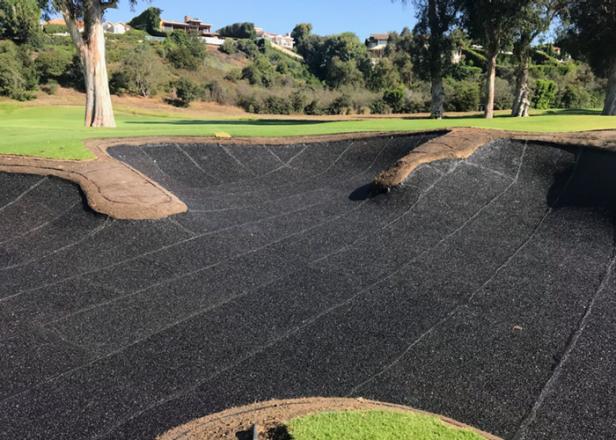Bunker liners are increasingly being used in golf course design, but they come with a significant increase in construction costs. These liners are made of polymers, concrete, or other materials that protect bunker sand from underlying soils. While they can add significant costs to construction budgets, they have the potential to solve maintenance and architectural issues, according to architect Drew Rogers. Rogers, who has worked with renowned architect Arthur Hills and consulted with various clubs across the United States, explains that bunker liners were initially developed to manage bunker drainage and prevent contamination from underlying soils.
Rogers emphasizes the value of bunker liners by highlighting their ability to protect investments in specialty bunker sand, prevent erosion and irrigation issues, and allow architects to create more creative bunker shapes without worrying about washouts or collapsing faces. While he initially had doubts about the effectiveness of bunker liners, Rogers acknowledges that they have come a long way in recent years and are now highly effective. He believes that clubs willing to invest in these products will see a return on their investment, depending on factors such as existing conditions, the number of bunkers, soil types, bunker styles, and precipitation levels.
However, bunker liners may not be suitable for every golf course. Courses with sandy or free-draining soils, dry climates with minimal rainfall, or flat-bottomed bunkers with grass faces may not benefit from bunker liners. On the other hand, for courses that struggle with stabilization of bunker sand after heavy rain events, bunker liners can save a substantial amount of money by reducing the labor required for bunker repairs. Superintendents may estimate saving up to 70 percent of their budget by eliminating the need for significant labor in bunker maintenance.
One potential downside of bunker liners is the cost and scope of tearing them out and replacing them when their lifespan expires, typically around 10 years. While the long-term maintenance costs should be considered, bunker liners offer architects and clubs additional options for bunker design and maintenance. Overall, bunker liners have become a valuable tool in golf course design, allowing for enhanced aesthetics, reduced maintenance costs, and increased durability of bunker sand. As technology continues to improve, bunker liners are expected to play a more significant role in the future of golf course architecture.


